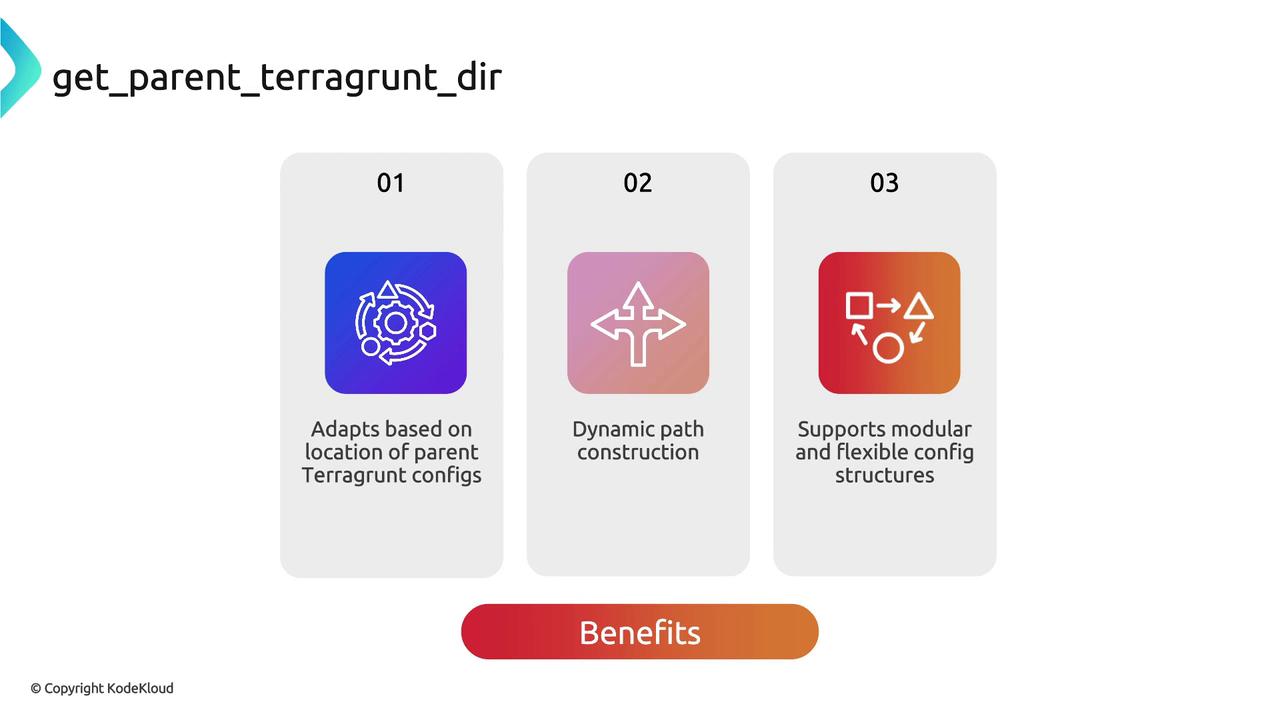Terragrunt for Beginners
Terragrunt Functions
get parent terragrunt dir
Terragrunt’s built-in function get_parent_terragrunt_dir() simplifies hierarchical configuration management by returning the file path of the parent Terragrunt directory. Use it to construct relative source paths, inherit common settings, and keep your infrastructure code modular and maintainable.
What Is get_parent_terragrunt_dir()?
get_parent_terragrunt_dir() resolves at runtime to the directory containing the nearest parent terragrunt.hcl. This enables:
- Dynamic discovery of module or state backend locations
- Reuse of shared configurations defined in a parent folder
- Cleaner directory structures for multi-environment setups
Note
Ensure your Terragrunt directory layout follows a clear hierarchy—each child folder must reside under a parent that contains a terragrunt.hcl.
Key Benefits
| Feature | Description |
|---|---|
| Dynamic Path Construction | Automatically build paths for Terraform modules relative to parent folders. |
| Hierarchical Inheritance | Share backend or provider settings from a top-level terragrunt.hcl. |
| Modular & Flexible Structures | Keep each environment or component isolated while reusing common logic. |

Example Usage
Place the following in a child environment’s terragrunt.hcl to reference a module stored alongside the parent configuration:
# terragrunt.hcl in /envs/dev
terraform {
source = "${get_parent_terragrunt_dir()}/modules/network"
}
inputs = {
vpc_cidr = "10.0.0.0/16"
}
This resolves to /envs/modules/network if the parent terragrunt.hcl lives in /envs.
Warning
Calling get_parent_terragrunt_dir() at the root level (where no parent exists) will result in an error. Always validate your folder structure before using this function.
Best Practices
- Keep a consistent directory layout so returned paths remain predictable.
- Use
get_parent_terragrunt_dir()forsourcedefinitions in nested configurations only. - Combine with other Terragrunt functions like
find_in_parent_folders()to import common settings.
Links and References
Watch Video
Watch video content